Perennial cosmos - garden decoration
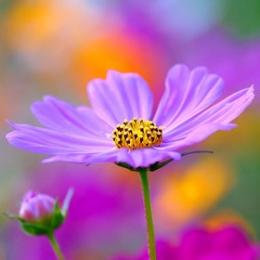
Cosmea perennial belongs to the Aster family, and its name is associated with the Greek word “kosmeo” - “to decorate”. The people among whom she is popular affectionately call her “beauty.” Currently, about 25 varieties of this plant are known. In our country, the most common species are Cosmea sulfur-yellow and Cosmea bipinnate.
Content:
- Cosmea habitat conditions: soil and fertilizers
- How to care for Cosmea: watering and pest control
- How to properly propagate Cosmea
Cosmea has low, compact bushes covered with bright, daisy-like, single or double flowers, with feathery leaves.
Cosmea habitat conditions: soil and fertilizers
Usually Cosmea is considered an annual, but there is a perennial tuberous Cosmea, propagated by cuttings, which blooms until frost. It winters well in regions with a warm climate; in colder climates, the plant needs to be covered with straw or fallen leaves for the winter. This will protect the flowers from freezing, the plant will not die and will overwinter favorably.
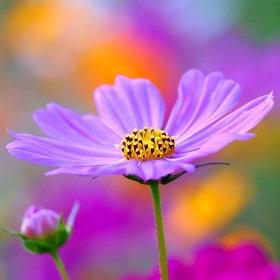
In general, Cosmea is not distinguished by its capriciousness towards living conditions. It can withstand summer drought and light frosts. The plant feels great both in the sun and in a shaded place. It has been noticed that in bright sunny places Cosmea blooms well: from above it is literally completely covered with flowers, which form a continuous beautiful carpet.But in the shade, on the contrary, the plant stands out thanks to its fluffy stems of a rich green hue, and the number of flowers is noticeably reduced.
Therefore, perennial Cosmea prefers places warmed by the sun and good watering. It is not picky about the soil, and with abundant feeding it stops blooming. But this does not mean at all that the plant does not need organic and mineral fertilizers at all.
The main thing is to know when to stop and not overuse it. This rule should especially be followed if the soil at the planting site is naturally fertile. In general, the ideal option for Cosmea is loose, drainage soil. During the period of bud ripening, if there is a lack of nutrients in the soil, you can add double superphosphate and use mullein the next time you water the plant.
How to care for Cosmea: watering and pest control
Maintenance requires regular, timely watering. Inflorescences that have already faded are immediately removed, thereby stimulating the formation of new buds. You can also set aside larger ones for new seeds to ripen.
Tall varieties of Cosmea supported by stakes driven into the ground. In addition to giving a decorative appearance, this provides additional protection for long stems from breaking and becoming nailed during heavy rain and wind. To give the bushes fullness and elasticity, do not neglect periodic loosening and weeding.
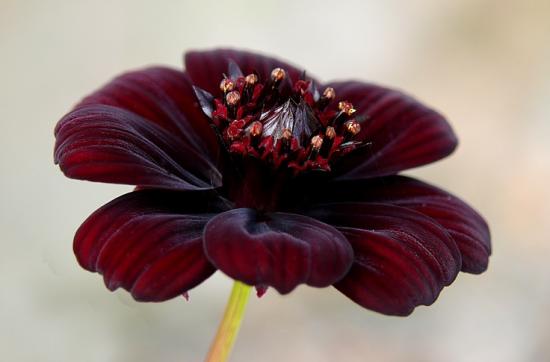
It is noted that Cosmea is resistant to many pests; its flowers are almost never affected. However, an attack by black aphids is possible; special preparations are used to combat it. Or you can prepare a soap solution yourself and spray the plants with it. During prolonged rains, Cosmea flowers may disturb snails and slugs.
In late autumn, after the first frost, it is recommended to completely trim the plant stems or leave a small above-ground part (but no more than 10-15 cm).
How to properly propagate Cosmea
Cosmea propagates by seeds, which are sown in April in cold greenhouses or open ground. You should not bury the seeds too deeply into the soil: you need to scatter them evenly over the surface and lightly press them down with your palm. You can also try planting seeds in winter, before the first frost and snowfall.
For seedlings, seeds are sown from March to mid-April, pressing them into the substrate, but not sprinkling them on top, since they need light to germinate. After this, the seeds need to be watered and covered with film. It is advisable to place the seedlings in a bright place; the room temperature should not fall below 18 degrees. Within 10-14 days, the first shoots appear. When they reach a height of 10 cm, it is advisable to thin them out. Seedlings are planted in a permanent place in May.

Cosmeya tolerates transplantation well. After the first planting, annual shoots will continue for another 3-5 years.
The plant is recommended for use near fences, walls, and rarely for cutting. Basically, they like to plant Cosmea in flower beds, because it can decorate and enliven any dull and deserted area. If you want to achieve more luxuriant flowering, then you should plant the seeds as often as possible. And, conversely, the less often the planting, the more green mass there will be. Due to its small flowers, it is not used as an independent bouquet for a vase, but several branches can be added to individual flower arrangements (especially floor ones).
Cosmea goes well with variegated annuals that match its color scheme (phlox, verbena, Turkish cloves), with marigolds, chamomile, dimorphotheca. The silvery-white duet of white-flowered Cosmea and giant bluehead is magnificent.

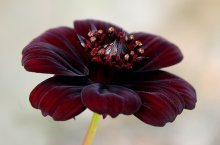

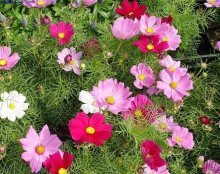
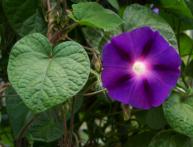
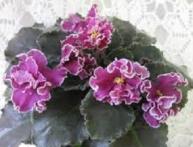

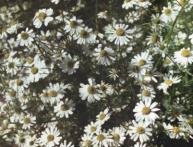
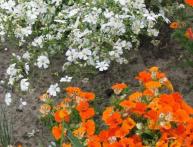
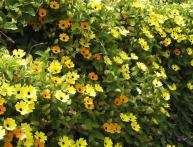
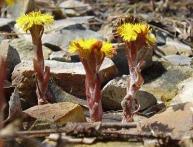
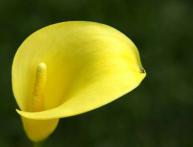
Comments
I didn’t know that perennial cosmos existed, I’ll definitely look for the seeds. I really love this plant, I associate it with childhood, its flowers and leaves are very delicate. It is also attractive that perennial cosmos is unpretentious and decorative, an excellent option for making an area more picturesque.
I really love these flowers for their, so to speak, unobtrusiveness, they are small, very delicate and perfectly decorate the garden. And most importantly, they are unpretentious. We also plant cosmos, and many of our neighbors in the country grow it.
Cosmea is one of my favorite annual flowers, which I plant every year in my garden. This unpretentious plant delights all summer with its delicate and graceful flowers. Every year I look for new shades.